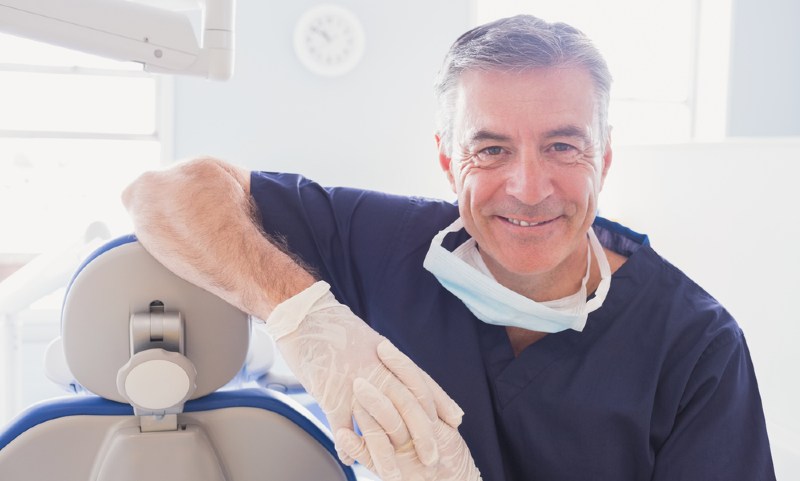Dental Practices – How to Choose the Best Retirement Plan

Over the years, Pension Investors have had the privilege of helping thousands of dental offices across the country establish pension plans. In general, most dental practices will have at least one-full time employee other than the business owner. Hence, in most cases, when deciding what type of retirement plan to adopt for the business, most dental practices will choose between a 401(k) plan or combined cash balance and 401(k) plans.
401(k) Plan
A traditional 401(k) plan allows eligible employees (i.e., employees eligible to participate in the plan) to make pretax elective deferrals through payroll deductions or Roth, if the plan documents permit. In addition, in a traditional 401(k) plan, employers have the option of making contributions on behalf of all participants, making matching contributions based on employees’ elective deferrals, or both. These employer contributions can be subject to a vesting schedule, which provides that an employee’s right to employer contributions becomes nonforfeitable only after a period of time or can be immediately vested. In order to ensure that the plan satisfies non-discrimination requirements, the employer must perform annual tests—known as the actual deferral percentage (ADP) and actual contribution percentage (ACP) tests—to verify that deferred wages and employer matching contributions do not discriminate in favor of highly compensated employees.
Safe Harbor 401(k) Plan
A safe harbor 401(k) plan is the most popular type of 401(k) plan. A safe harbor 401(k) plan is similar to a traditional 401(k) plan, but, among other things, it must provide for employer contributions that are fully vested when made. These contributions may be employer matching contributions limited to employees who defer, or employer contributions made on behalf of all eligible employees, regardless of whether they make elective deferrals. The safe harbor 401(k) plan is not subject to the complex annual nondiscrimination tests (ADP or ACP) that apply to traditional 401(k) plans.
The reason the safe harbor plan is so popular with medical practices, like dental offices, is that it offers the business owners the assurance that they will be able to max-out their 401(k) plan contributions. For 2024, the maximum employee deferral contribution is $23,000 or $30,500 if age 50 or over. In other words, the safe harbor 401(k) plan is a great option if you want to avoid stress trying to navigate the very complex 401(k) plan’s testing requirements each year and dealing with potential testing failures.
The safe harbor 401(k) plan makes the most sense and is what most small businesses do. All this in exchange for a commitment to make a minimum level of contributions that many sponsors make anyway – typically three percent of the employee’s salary. In other words, an owner of a dental practice would likely elect the safe harbor 401(k) plan option for the business if they had a number of employees and they wanted to guarantee themselves the ability to max out their employee deferral contributions of $23,000 or $30,500 if age 50 or over. The only trade-off is that the business would be required to make a safe harbor employer contribution to each eligible employee equal to at least 3% of their compensation. The employer safe-harbor contribution is also tax deductible to the business.
Cash Balance Plan
Unlike a 401(k) plan, which does not have a specified retirement benefit, a defined benefit plan provides for a predetermined retirement benefit. In other words, with a 401(k) plan the employee is responsible for making contributions, whereas, with a defined benefit plan the employer is responsible for making contributions to the plan for the employee. A cash balance plan has become the most popular type of defined benefit plan. Once the retirement benefit objective is established, the employer defined benefit contributions required to meet the benefit objective is determined actuarially on an annual basis. The major benefit of establishing a cash balance plan is the high annual contributions limits, which are based on numerous factors including age and income. For example, for 2024, the maximum contribution for a Cash Balance Plan can be as high as $335,000, which is much higher than the maximum 401(k) plan maximum contribution limit.
Cash Balance Combined with 401(k) Plan
For many businesses and professionals, adding a 401(k) plan to a cash balance plan is the ultimate retirement plan option. The business owner is essentially supplementing the $19,500 or $26,000 they can contribute to a 401(k) plan with the ability to generate hundreds of thousands of dollars of additional tax deductions and retirement benefits. For example, for a fifty-year old business owner with annual compensation of $285,000 or more, combining a cash balance plan with a 401(k) plan increases the potential maximum annual tax-deductible plan contribution from $69,000 up to approximately $210,000.
Which Plan is Right for Me?
Establishing a pension plan for your business is not only a great tax and retirement planning tool, it is also a great way to retain key employees and ultimately help everyone save more for retirement. For dental practice owners, below is a table that should give you a clearer idea of whether a 401(k) safe harbor plan or combined 401k/cash balance plans will best serve your tax and retirement goals:
| 401(k) Plan – Safe Harbor | Combo Cash Balance & 401(k) Plan | |
| Business owners seeking to contribute more than $23,000 ($30,500 if 50+) | X | |
| Business owners age is above 45 | X | |
| Business has steady cash flow and profits | X | |
| Business has more than 15 employees | X | |
| Business has mostly young employees | X | |
| Business owners seeking to maximize tax deductions & retirement savings | X |
If you believe in the long-term viability of your dental practice and want to maximize your annual tax deductions, generate real retirement wealth, and also help retain your best team members, then establishing either a 401(k) plan or combo cash balance plan is a great option. Plus, the IRS will help you do so by offering a minimum $500 tax credit for setting up your new pension plan.
To learn more about setting up the best pension plan for your dental practice, please contact one of our pension experts at (407) 875-3332.


